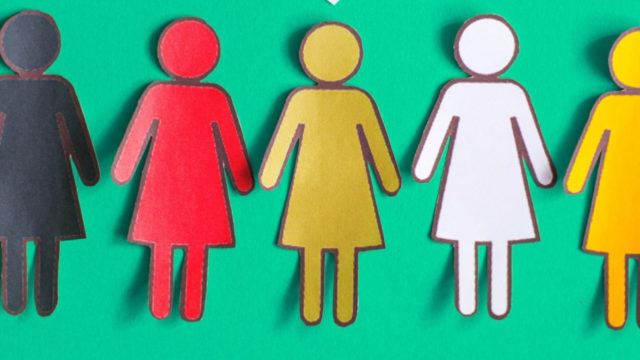This blog post was written by Donna Seymour for our 2018 PowHer The Vote campaign.
In conversations with candidates I have held this fall, all of them identify jobs and economic development as a number one issue, with reducing the burden on property tax payers a close second. Yet, few of them talk about paying a living wage, equal pay, or insisting that employers do their part to ease the burden that corporate welfare puts on taxpayers from low wages.
Gender pay inequity and low-wages put the burden of meeting the expenses of employees squarely on the backs of local taxpayers, who make up the difference in the costs of living with social safety net programs.
November 1 marks that last of the several “Pay Equity” days in America. Every class and race of American woman suffers from the pay gap. It took 4 months for white women to catch up with white men’s pay on April 10; mom’s equal pay happened on May 30; black women reach parity on August 7; Southeast Asian women caught up on Sept. 12, Native women on Sept. 27, and Latina women waited a full 20 months to catch up on Nov. 1. The Latina woman’s pay gap is 54 cents to a white man’s salary dollar.
The pay gap not only hurts women and their families, but it also hurts the communities they support. That means local businesses are hurt through lost sales, as are local schools and governments that depend up on sales tax and property tax dollars to fund the programs and the infrastructure those communities need to exist.
And it is not just low and unequal wage practices that hurt women and their communities. Low wage workers are all too often the target of wage theft. In April, New York State reported that state investigators recovered more than $35.3 million in stolen wages in 2017, up more than $1.3 million from 2016. Those lost wages were returned to 36,446 workers across New York who weren’t properly compensated for their time on the job.
One example of the societal costs of corporate welfare is the historically high compensation paid to CEOs and stock holders on the backs the real work done by a company’s employees, who all too often are thrown on local social services to make ends meet. Walmart is a case in point: CEO Doug McMillon earned $22.8 million during the retailer’s last fiscal year, which ended on January 31, yet Walmart’s median employee earned just $19,177 during the same timeframe. That is 1,188 times as much in compensation for the CEO.
Walmart, the nation’s largest private-sector employer, has around 1.5 million US employees, out of about 2.3 million employees worldwide. Even modest income sharing would bring the average Walmart employee up to a living wage and barely impact the bottom line for its CEO or the Walton heirs, who rank among the world’s richest people every year.
Think how far 1.5 million living wage paychecks would go toward boosting local economies and increasing tax revenues coupled with a reduced burden on the social safety net. In New York State, social service costs are paid directly by country governments who then must wait for state and federal reimbursement. Add in what giving equal pay checks to the 76.4 million American women who were working outside the home in 2017 and you can see what it would mean to the overall and to local economies.
We hear a lot these days about low unemployment numbers and overall confidence in the economic recovery, but those numbers don’t translate across the spectrum very well. There are stark difference between men and women in this area:
Men feel better about the economy than they have in over a decade. Women are far more skeptical. And the sharp divide has emerged since President Trump was elected two years ago. Nearly half of men — 47 percent — said their family’s finances had improved in the past year, according to a survey conducted for The New York Times in early October by the online research platform SurveyMonkey. Just 30 percent of women said the same, despite an unemployment rate that is near a five-decade low and economic growth that is on track for its best year since before the recession.
Two possible reasons for this stark difference could just be that women are too often locked into “pink ghetto” jobs and are the victims of systemic pay discrimination.
Consider the huge corporate tax cut delivered late last year by the Trump Administration and Congress that sharply curtailed federal revenues this year. Those cuts will directly lead to reductions in social safety net programs and throw even more stress onto local governments who can’t duck responsibility for their citizens.
Living wages and equal pay start to look like solutions to economic distress, don’t they? What positions do the candidates you’ll be voting for November 6 hold on these key issues? Pay close attention to what you hear. Remember that while all answers are responses, not all responses are answers – to the questions asked.
One way to change the conversation on these topics is to elect more women to make sure these topics make it to the table after Election Day.


